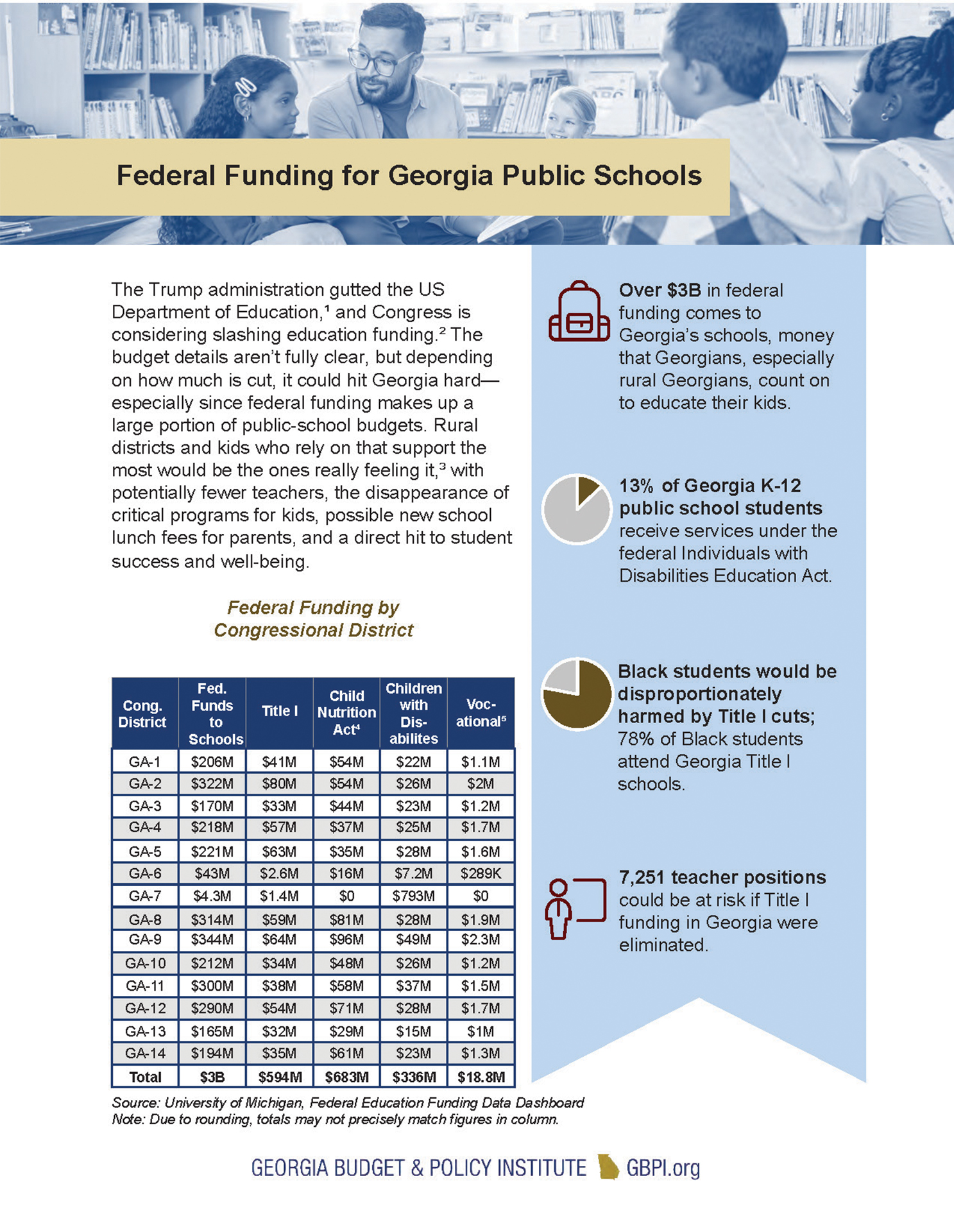

Federal funding by congressional district
Source: University of Michigan, Federal Education Funding Data Dashboard
Note: Due to rounding, totals may not precisely match figures in column.
Federal Funds Support Every County School District
Note 1: County School Systems Only, representing 90% of Georgia students
Note 2: Atlanta Public School System is primarily located in Fulton County and is the largest non-county school system; APS receives 10.7% of its funds from federal sources; state average is 12.1%.
Note 3: To compare with congressional district map, visit US Census Bureau.
Source: Georgia Department of Education, Revenues and expenditures dashboard, 2024; Georgia Department of Education, Student (FTE) enrollment by grade level (PK-12)(Oct. 1, 2024)
Endnotes:
[1] Trump signs order for plan to shut down Education Department. AP/PBS
[2] What the latest federal funding law means for schools. EdWeek
[3] Referencing text box at right: Georgia receives over $3B annually from federal sources for K-12 public schools (Title I=$594M; Child Nutrition Act=$683M; Children with Disabilities=$336M); Federal Education Funding Data Dashboard. University of Michigan; Project 2025’s elimination of Title I funding would hurt students and decimate teaching positions in local schools. Center for American Progress; Special education funding in Georgia. GBPI; Students with disabilities (2022-2023). NCES; Children in Title I Schools, by race and ethnicity (2018-19). Kids Count Data Center (2019). Georgia Department of Education.
[4] School Meals and Other Child Nutrition Programs: Background and Funding. Congressional Research Service. The Child Nutrition Act, which authorizes the School Breakfast Program, supports breakfasts for children who are in preschool up through Grade 12. The Child Nutrition Act authorizes the National School Lunch Program as well. (National Farm to School Network; Food Research and Action Center).
[5] Perkins Collaborative Resource Network. US Department of Education. Includes funding through the Perkins V grant, a program designed to expand Career and Technical Education (CTE) offerings in K-12 settings.
[6] Referencing text box below: Feeding America (2019); Georgia Department of Education; Georgia Chamber and GaDOE Partner on Rural Workforce Efforts (2023); US Department of Education, McKinney-Vento funds and Georgia DOE.








